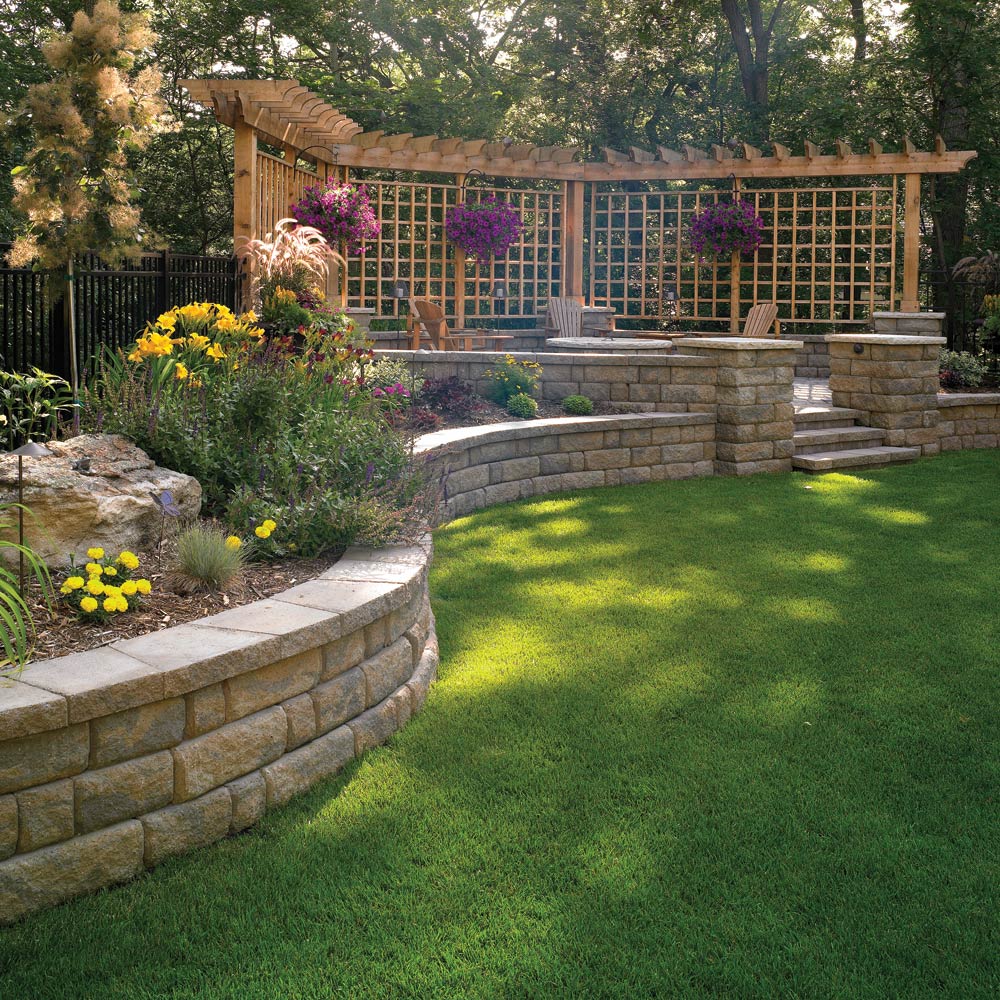The Buzz on Retaining Wall And Garden Wall Construction
Wiki Article
3 Simple Techniques For Retaining Wall And Garden Wall Construction
Table of ContentsRetaining Wall And Garden Wall Construction Fundamentals ExplainedAn Unbiased View of Retaining Wall And Garden Wall ConstructionThe Main Principles Of Retaining Wall And Garden Wall Construction The Main Principles Of Retaining Wall And Garden Wall Construction Some Known Questions About Retaining Wall And Garden Wall Construction.
If this gradient is not controlled, the wall will move or stop working. Rain that runs off the top of a keeping wall surface can harm the dirt and plants on either side, eroding them away. Drainage systems divert this water from susceptible areas, minimizing the influence to the framework and also its environments.
Fill it with smashed rock or crushed rock. All preserving wall surfaces need to consist of drain stone even if a draining pipes pipeline is not called for. Location filter material above the drainage stone as well as below the topsoil. That stops fine material and also raw material from congesting the drain stone. If your retaining wall surface requires a drain pipe, make sure the pipeline has ports on all sides, not just one.
The Single Strategy To Use For Retaining Wall And Garden Wall Construction
Clay or other inadequate draining soils are behind the wall. There are hidden water resources within 50 feet of the keeping wall surface place 5. There are electrical outlet options for your water drainage pipe. Whichever one you pick, put an outlet at the very least every 30 to 50 feet along the wall. Poorly drain will certainly shorten the life of your keeping wall surface.

Fabricated wall utilized for sustaining soil between 2 different elevations Preserving walls are fairly stiff walls utilized for sustaining dirt side to side so that it can be maintained at various degrees on both sides. Retaining walls are structures developed to restrain soil to a slope that it would not naturally keep to (normally a high, near-vertical or upright incline).
4 Easy Facts About Retaining Wall And Garden Wall Construction Shown
A preserving wall that keeps soil on the backside and also water on the frontside is called a seawall or a bulkhead. A preserving wall surface is created to hold in place a mass of planet or the like, such as the side of a balcony or excavation. The structure is created to stand up to the side stress of soil when there is a wanted modification in ground elevation that surpasses the angle of repose of the soil.These are cantilevered from a ground and also surge above the quality on one side to keep a greater level grade on the opposite side. The wall surfaces have to withstand the lateral stress produced by loosened soils or, in many cases, water pressures. Every maintaining wall sustains a "wedge" of dirt. The wedge is defined as the soil which prolongs past the failure aircraft of the dirt kind existing at the wall surface site, and also can be determined as soon as the soil rubbing angle is known. Retaining Wall And Garden Wall Construction.

This reduction lowers the pressure on the retaining wall. One of the most important consideration in correct layout and also setup of preserving wall surfaces is to acknowledge and counteract the propensity of the maintained material to move downslope due to gravity. This develops side earth pressure behind the wall surface which depends upon the angle of internal rubbing (phi) use this link and also the cohesive toughness (c) of the retained product, in addition to the instructions and magnitude of activity the retaining framework undertakes.
The Basic Principles Of Retaining Wall And Garden Wall Construction
Different sorts of retaining walls Building types of gravity maintaining wall surfaces YOURURL.com Gravity wall surfaces depend on their mass (stone, concrete or other heavy material) to resist pressure from behind and might have a 'batter' obstacle to enhance stability by leaning back toward the kept dirt. For short landscaping walls, they are commonly made from mortarless rock or segmental concrete systems (masonry units).These walls cantilever tons (like a beam of light) to a large, structural ground, converting horizontal stress from behind the wall to vertical stress on the ground below. Occasionally cantilevered walls are upheld on the front, or include a counterfort on the back, to improve their stamina withstanding high tons. Buttresses are short wing walls at right angles to the main trend of the wall surface. Diaphragm walls are costly walls, yet they conserve time as well as space, as well as hence are made use of home in metropolitan constructions. Sheet stack preserving walls are normally utilized in soft dirt as well as tight areas.

The Buzz on Retaining Wall And Garden Wall Construction
An anchored retaining wall can be built in any one of the aforementioned styles but likewise consists of added strength making use of wires or other remains anchored in the rock or dirt behind it. Generally driven into the material with boring, anchors are then broadened at the end of the cable television, either by mechanical methods or typically by infusing pressurized concrete, which increases to create a light bulb in the dirt.Report this wiki page